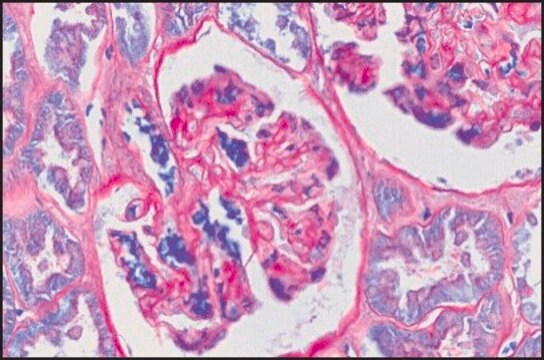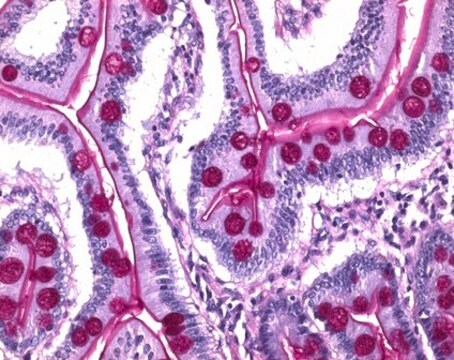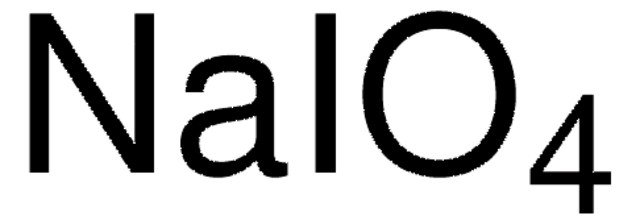P7875
Periodsäure
ReagentPlus®, ≥99.0%
About This Item
Empfohlene Produkte
Qualitätsniveau
Produktlinie
ReagentPlus®
Assay
≥99.0%
Form
powder or crystals
Eignung der Reaktion
reagent type: oxidant
Methode(n)
toxicology assay: suitable
mp (Schmelzpunkt)
122 °C (lit.)
Löslichkeit
water: 100 mg/mL, clear, colorless
SMILES String
OI(O)(O)(O)(O)=O
InChI
1S/H5IO6/c2-1(3,4,5,6)7/h(H5,2,3,4,5,6,7)
InChIKey
TWLXDPFBEPBAQB-UHFFFAOYSA-N
Suchen Sie nach ähnlichen Produkten? Aufrufen Leitfaden zum Produktvergleich
Allgemeine Beschreibung
Anwendung
- Oxidation von Alkoholen zu Ketonen und Aldehyden.
- Oxidation von Hydroxylamin-Derivaten.
- Oxidation von Arenen zu Chinonen.
Sie kann auch wie folgt eingesetzt werden:
- Als stoichiometrisches Oxidans mit Chrom(IV)acetat für die Oxidation von tertiären C−H-Bindungen an tertiäre Alkohole.
- In Kombination mit Chromoxid zum Oxidieren von primären Alkoholen zu Carbonsäuren, Alkylbenzolen zu Benzoesäuren und cyclischen Benzylethern zu den entsprechenden Lactonen.
- Bei der selektiven Oxidation von Sulfiden zu Sulfoxiden unter Verwendung von FeCl3 als Katalysator.
Rechtliche Hinweise
Signalwort
Danger
H-Sätze
Gefahreneinstufungen
Aquatic Acute 1 - Aquatic Chronic 1 - Eye Dam. 1 - Ox. Sol. 1 - Skin Corr. 1B - STOT RE 1 Oral
Zielorgane
Thyroid
Lagerklassenschlüssel
5.1A - Strongly oxidizing hazardous materials
WGK
WGK 3
Flammpunkt (°F)
Not applicable
Flammpunkt (°C)
Not applicable
Analysenzertifikate (COA)
Suchen Sie nach Analysenzertifikate (COA), indem Sie die Lot-/Chargennummer des Produkts eingeben. Lot- und Chargennummern sind auf dem Produktetikett hinter den Wörtern ‘Lot’ oder ‘Batch’ (Lot oder Charge) zu finden.
Besitzen Sie dieses Produkt bereits?
In der Dokumentenbibliothek finden Sie die Dokumentation zu den Produkten, die Sie kürzlich erworben haben.
Kunden haben sich ebenfalls angesehen
Unser Team von Wissenschaftlern verfügt über Erfahrung in allen Forschungsbereichen einschließlich Life Science, Materialwissenschaften, chemischer Synthese, Chromatographie, Analytik und vielen mehr..
Setzen Sie sich mit dem technischen Dienst in Verbindung.











